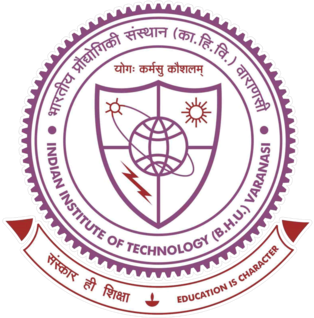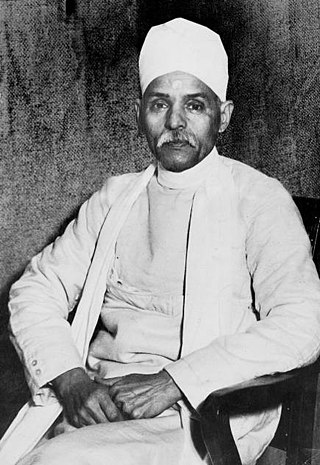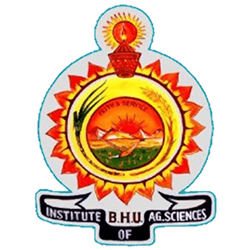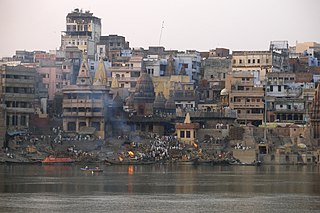
Mirzapur is a city in Uttar Pradesh, India, 827 km from Delhi and 733 km from Kolkata, almost 91 km from Prayagraj and 61 km from Varanasi. It is known for its carpets and brassware industries, and the tradition of kajari and birha music. The city is surrounded by several hills of the Maikal range and is the headquarters of Mirzapur district.

Banaras Hindu University (BHU) is a collegiate, central, and research university located in Varanasi, Uttar Pradesh, India, and founded in 1916. The university incorporated the Central Hindu College, founded by Indian Home Rule-leaguer and Theosophist, Annie Besant in 1898. After Besant and her associates were marginalized, the university was established by Madan Mohan Malaviya with the financial support of the maharaja of Darbhanga Rameshwar Singh, the maharaja of Benares Prabhu Narayan Singh, and the lawyer Sunder Lal. With over 30,000 students, and 18,000 residing on campus, BHU is the largest residential university in Asia. The university is one of the eight public institutions declared as an Institute of Eminence by the Government of India. It is also one of the 12 institutions from India in BRICS Universities League, a consortium of leading research universities from BRICS countries.

Indian Institute of Technology Varanasi(IIT-BHU) is a public technical university located in Varanasi, Uttar Pradesh, India. Founded in 1919 as the Banaras Engineering College, it became the Institute of Technology, Banaras Hindu University in 1968. It was later designated an Indian Institute of Technology in 2012. IIT (BHU) Varanasi has 16 departments, 3 inter-disciplinary schools and 1 Humanities & Social Sciences Section. It is located inside the Banaras Hindu University Campus.

Varanasi district is a district in the Indian state of Uttar Pradesh, with the holy city of Varanasi as the district headquarters. It is also the headquarters of the Varanasi Division which contains 4 districts.

Indian Chinese cuisine, Chinese Indian cuisine, Sino-Indian cuisine, Chindian cuisine, Hakka Chinese or Desi-Chinese cuisine is a distinct style of Chinese cuisine adapted to Indian tastes, combining Chinese foods with Indian flavours and spices. Though Asian cuisines have mixed throughout history throughout Asia, the most popular origin story of the fusion food resides with Chinese labourers of Calcutta, who immigrated to British Raj India looking for work. Opening restaurant businesses in the area, these early Chinese food sellers adapted their culinary styles to suit Indian tastes.

Sankat Mochan Hanuman Temple is a Hindu temple in Varanasi, Uttar Pradesh, India and is dedicated to the Hindu God Hanuman. The temple was established by famous Hindu preacher and poet saint Sri Goswami Tulsidas in the early 16th century and is situated on the banks of the Assi river. The deity was named "Sankat Mochan" meaning the "reliever from troubles".
Veer Bhadra Mishra was the founding president of the Sankat Mochan Foundation.

Tanjore Ramachandra Anantharaman was one of India's pre-eminent metallurgists and materials scientists.
The state of Uttar Pradesh had a small tradition of learning, although it had remained mostly confined to the elite class and the religious establishment.
There is a small Korean community in India, consisting largely of South Korean expatriate professionals and their families, as well as some missionaries and international students at Indian universities.
The Indian Institutes of Technology (IITs) are a network of engineering and technology institutions in India. Established in 1950, they are renowned for their academic excellence. They are under the ownership of the Ministry of Education of the Government of India and are governed by the Institutes of Technology Act, 1961. The Act declares them as Institutes of National Importance and lays down their powers, duties, and framework for governance as the country's premier institutions in the field of technology. The act currently lists twenty-three IITs. Each IIT has autonomy and is linked to others through a common council called the IIT Council, which oversees their administration. The Minister of Education of India is the ex officio chairperson of the IIT Council.

Assi Ghat is the southernmost ghat in Varanasi. To most visitors to Varanasi, it is known for being a place where long-term foreign students, researchers, and tourists live. With hosting Subah-e-Banaras in the morning, assi ghat provides a spectacular notion of river Ganga.

Indians in Korea consist of migrants diaspora from India to Korea and their locally born descendants. A majority of them live in Seoul and Busan while there are smaller populations living in other parts of Korea.

Madan Mohan Malaviya was an Indian scholar, educational reformer and politician notable for his role in the Indian independence movement. He was president of the Indian National Congress four times and the founder of Akhil Bharat Hindu Mahasabha. He was addressed as Pandit, a title of respect, and also as Mahamana.
Harihar Rao was an Indian-born American musician, noted for playing tabla and sitar.

Institute of Agricultural Sciences, Banaras Hindu University is one of India's premier agricultural colleges located in Varanasi in Uttar Pradesh state. It is one of the three institutes of the Banaras Hindu University.

Varanasi is a city on the Ganges river in northern India that has a central place in the traditions of pilgrimage, death, and mourning in the Hindu world. The city has a syncretic tradition of Muslim artisanship that underpins its religious tourism. Located in the middle-Ganges valley in the southeastern part of the state of Uttar Pradesh, Varanasi lies on the left bank of the river. It is 692 kilometres (430 mi) to the southeast of India's capital New Delhi and 320 kilometres (200 mi) to the southeast of the state capital, Lucknow. It lies 121 kilometres (75 mi) downstream of Prayagraj, where the confluence with the Yamuna river is another major Hindu pilgrimage site.
Kashiyatra, also known as KY, is the annual socio-cultural festival of Indian Institute of Technology (BHU) Varanasi. It is a four-day long mega event held in January every year, and is one of the most prominent college festivals in India. Kashiyatra is one of the largest socio-culture festivals in Asia where 360+ colleges/universities take part.
Mark S. G. Dyczkowski is an English Indologist, musician and a scholar on Tantra and Kashmir Shaivism. He has published multiple translations and commentaries, most notably the 12 volume Manthanabhairava Tantra and an 11 volume Tantrāloka including the commentary by Jayaratha. Dyczkowski also plays the sitar and has collected over 1,500 compositions for sitar.












